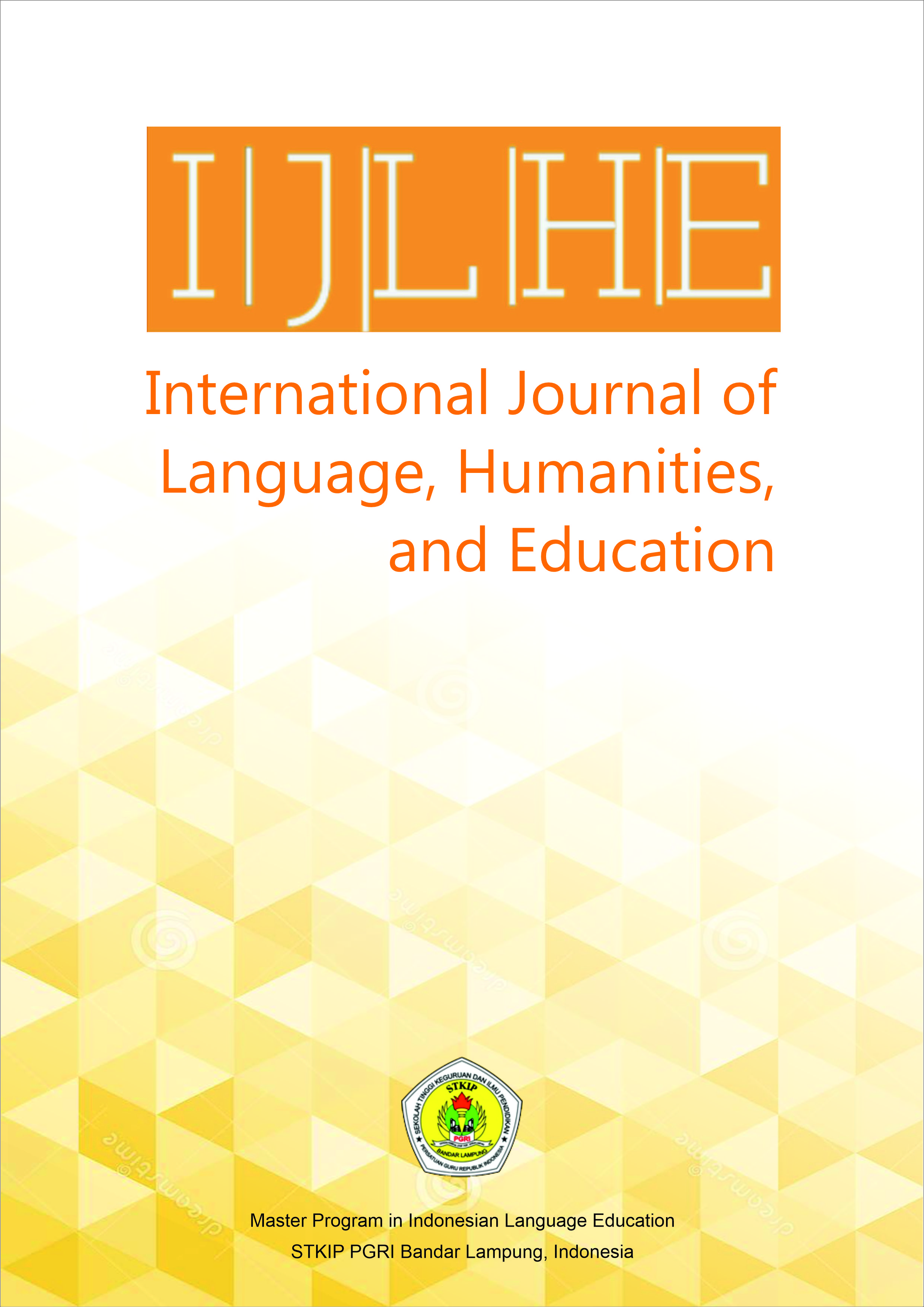Empowering Listening Comprehension through Pre-Listening Strategies: An Action Research Study on EFL Learners
DOI:
https://doi.org/10.52217/ijlhe.v8i1.1836Keywords:
action research, EFL learners, Language learning strategies, Listening comprehension, Pre-listening strategiesAbstract
Listening comprehension remains one of the most challenging language skills for English as a Foreign Language (EFL) learners. This action research study explores the impact of pre-listening language learning strategies on the listening comprehension skills of first-semester students at Universitas Pamulang. A total of 35 students participated in a structured intervention comprising three cycles of strategy-based listening instruction. Data were collected through observation forms, researcher-practitioner journals, and semi-structured interviews. Descriptive and content analyses were employed to interpret the data. The findings reveal that the explicit teaching of pre-listening strategies significantly improved learners’ motivation, comprehension, and engagement with listening tasks. Students reported increased confidence, enhanced understanding of listening texts, and reduced anxiety. Although a few learners faced challenges in recalling prior knowledge or vocabulary, the majority expressed positive attitudes toward the approach. The study highlights the value of incorporating pre-listening strategies as an integral component of EFL instruction to support listening development and learner autonomy.
References
Brown, S. (2011). Listening myths: Applying second language research to classroom teaching. University of Michigan Press.
Celce-Murcia, M., Brinton, D. M., & Snow, M. A. (2014). Teaching English as a second or foreign language (4th ed.). National Geographic Learning.
Cohen, A. D. (2014). Strategies in learning and using a second language. Routledge.
Denzler, K. (2024, October 31). Can you really teach listening comprehension? Carnegie Learning Blog.
Dere görü, A., & Öz, E. (2021). Listening strategy use in distance foreign language education contexts. English Language Teaching, 14(10), 62–75. https://doi.org/10.5539/elt.v14n10p62
Field, J. (2008). Listening in the language classroom. Cambridge University Press.
Flowerdew, J., & Miller, L. (2005). Second language listening: Theory and practice. Cambridge University Press.
Gilakjani, A. P. (2016). The significance of listening comprehension in English language teaching. Theory and Practice in Language Studies, 6(8), 1670–1677. https://doi.org/10.17507/tpls.0608.22
Gilakjani, A. P., & Sabouri, N. B. (2016). Learners’ listening comprehension difficulties in English language learning: A literature review. English Language Teaching, 9(6), 123–133. http://dx.doi.org/10.5539/elt.v9n6p123
Gonzalez Torres, P. F., & Solano, L. M. (2024). Impact of listening journals via video on EFL listening skills. Journal of University Teaching and Learning Practice, 21(1). https://doi.org/10.53761/stbpjr54
Hocaoğlu, N., & Ocak, G. (2024). The effect of listening strategies on the listening and speaking skills and listening motivation. Problems of Education in the 21st Century, 82(6), 818–836. https://doi.org/10.33225/pec/24.82.818
Hsu, Y. H. (2024). Effectiveness of structured listening activities in English learning. SHS Web of Conferences, 200, 02022. https://doi.org/10.1051/shsconf/202420002022
Krefting, L. (1991). Rigor in qualitative research: The assessment of trustworthiness. The American Journal of Occupational Therapy, 45(3), 214–222. https://doi.org/10.5014/ajot.45.3.214
Mandasari, B., Basthomi, Y., Hastomo, T., Afrianto, Hamzah, I., & Aminatun, D. (2025). The snapshots of Indonesian pre-service English teachers’ perspectives on integrating technology-based tools to rural schools. Voices of English Language Education Society, 9(1), 42–57. https://doi.org/10.29408/veles.v9i1.27965
Merriam, S. B. (2009). Qualitative research: A guide to design and implementation. Jossey-Bass.
Nation, I. S. P., & Newton, J. (2009). Teaching ESL/EFL listening and speaking. Routledge.
Oxford, R. (2017). Teaching and researching language learning strategies. Routledge.
Paramole, O. C., Adeoye, M. A., Arowosaye, S. A., & Ibikunle, Y. A. (2024). The impact of active listening on student engagement and learning outcomes in educational settings. International Journal of Universal Education, 2(2), 77–89. https://doi.org/10.33084/ijue.v2i2.8898
Qasserras, L. (2025). Systematic review of effective teaching listening practices in ESL/EFL settings. European Journal of English Language Teaching, 9(6). http://dx.doi.org/10.46827/ejel.v9i6.5768
Renandya, W. A. (2012). The tape is too fast! Extensive listening in ELT. ELT World Online, 4, 1–15. https://eric.ed.gov/?id=EJ908225
Renandya, W. A., & Farrell, T. S. C. (2011). ‘Teacher, the tape is too fast!’ Extensive listening in ELT. ELT Journal, 65(1), 52–59. https://doi.org/10.1093/elt/ccq015
Richards, J. C. (2008). Teaching listening and speaking: From theory to practice. Cambridge University Press.
Vandergrift, L., & Goh, C. C. M. (2012). Teaching and learning second language listening: Metacognition in action. Routledge.
Velasco, X. A., & Acuña, M. J. B. (2021). Listening strategies and listening comprehension of L2 learners. Journal on English Language Teaching, 11(3), 44–51. https://eric.ed.gov/?id=EJ1328262













